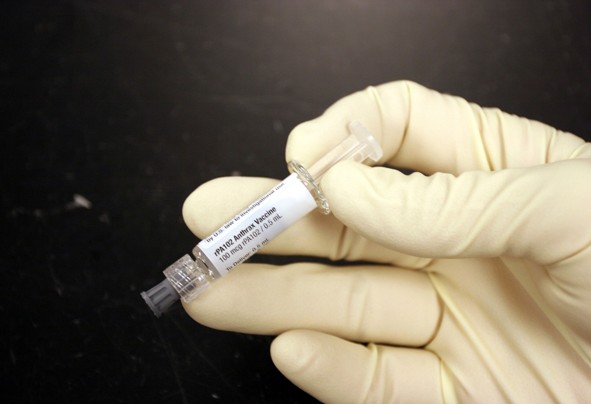1980: NIH Inaugurated the “Decade of the Brain”
National Institute of Mental Health (NIMH) inaugurated the “Decade of the Brain” and sponsored Psychiatry’s Cruel and Inhumane Research Paradigm
In the 1980s and 1990s increased federal funding accelerated clinical research into mental disorders. History has demonstrated that mental patients are most often exploited in experiments that disregard their safety and result in harm. A standard experimental design in psychiatric clinical trials subjects mentally fragile / disabled patients to experimental drug “wash-out” prior to testing new drugs against placebo, thereby putting them at risk of psychotic relapse.
An even worse experimental paradigm in psychiatric research is the so-called “challenge” paradigm in which patients are subjected to chemical provocation that deliberately provoke psychosis and relapse. The experiments are wholly contrary to clinical standards of care; they are conducted with complete disregard for the harm they cause to the individual patients. The rationalization for conducting them is to study the pathophysiology of psychosis. The number of patients who have been harmed in such unconscionable experiments, some of who have committed suicide, remains undocumented.
“L-dopa Challenge and Relapse,” published in the American Journal of Psychiatry (1987), encapsulates psychiatry’s cruel inhumane research paradigm in which patients are subjected to deliberate relapse-inducing methods to study “the pathophysiology” of schizophrenia, depression, etc. The paradigm is borrowed from animal physiology experiments.
The L-Dopa experiment was conducted by a Mount Sinai research team led by psychiatrist, Kenneth Davis, MD on 28 U.S. veterans at the Bronx VA. The 28 veterans who had been living in the community, seven of who were deemed by the researchers as completely asymptomatic, were not only abruptly taken off their medications; they were deliberately put at increased risk of a psychotic relapse by being prescribed L-dopa, a drug known to induce psychosis. The veterans were deceived about the purpose of the experiment—which was to induce a psychotic relapse – the psychiatrists violated clinical practice standards and disregarded the safety of the subjects. The 28 veterans were not only taken off their medications; they were put at increased risk of a psychotic relapse by being prescribed L-dopa, a drug known to induce psychosis. The stated purpose of the experiment was to document the time interval between the L-dopa challenge and psychotic relapse. The consent document deceived the veterans, stating that L-dopa was “a medication for schizophrenia.” All 28 veterans relapsed.
In clinical trials testing four antipsychotic drugs—Eli Lilly’s Zyprexa, Johnson& Johnson’s Risperdal, Astra Zeneca’s Seroquel and Abbott Lab’s Serlect (withdrawn deemed unsafe)—involved 12,176 human subjects. There were 88 deaths, including 38 suicides within 30 days after patients left the trial. The overall death rate was 1 in 138 subjects; the annual suicide rate for schizophrenia patients is two to five per 1,000 persons. Additionally, the drop-out rate in schizophrenia and antidepressant trials is 70%. Although “washout” and “challenge” experiments are indefensible ethically, medically or scientifically, they continue to be part of psychiatry’s research designs throughout the so-called “Decade of the Brain”and beyond.
UCLA Schizophrenia relapse-inducing drug washout experiment:
In 1991, Tony LaMadrid, a research subject in this relapse-inducing UCLA study committed suicide after being subjected to drug “wash-out.” The experiment was conducted by psychiatrist Keith Nuechterlein, MD and Michael Gitlin, MD; 90% of the patients in the experiment relapsed. The experiment became a cause célèbre, after it was exposed by the Washington Post (1998) on the front page.
Read more: Federally-Funded Relapse Inducing Experiments in Psychiatry: Drug Washout / Chemical Provocation, a Partial Bibliography Relapse-Provocation Experiments Bibliography_2000; Evidence of Neuroleptic Drug-Induced Brain Damage; A Partial Annotated Bibliography by Vera Sharav, 2000;Ethical Problems in Psychiatric Research by Nathaniel Lehrman, MD and Vera Hassner Sharav, Journal of Mental Health Administration, 1997, full text posted at PsychRights here.
Decade of the Brain, the Winners
There were winners who profited handsomely from the Decade of the Brain:
For example, the Society for Neuroscience (SfN) continued its significant growth during the 1980s, even as several more established biological societies experienced periods of stagnation. SfN leadership and members bombarded Congress the Senate and House Appropriations Subcommittees with the following orchestrated pitch:
“research into the basic mechanisms of brain organization is in the midst of its most exciting and productive period… Dr. Floyd Bloom and Dr. David Cohen argued for the unique scientific and clinical importance of neuroscience, stressing that fundamental neuroscience research was the key to understanding neurological and mental disorders, which affected some 165 million Americans.”
This effort was successful, and the subcommittee recommended to the full Appropriations Committee that the NINCDS FY1978 budget be increased to $175 million, $14 million more than President Carter had requested.140 This represented a 15 percent increase for the institute, compared with a 12 percent increase for NIH overall.
From 1979 to 1989, individual membership more than doubled from 6,351 to 13,433, and the number of chapters grew from 67 to 97. Neuroscience departments and programs flourished as well, increasing from 29 in 1978 to 47 in 1986.
“The vast majority (92 percent) of neuroscientists worked in at least two broad areas of neuroscience, and received research support from a diverse array of governmental institutions. Finally, it was not unexpected that, despite the Society’s interest in ethnic and gender diversity, 79 percent of the respondents were men, and 91 percent were Caucasian.” (Read more…History of SfN)

